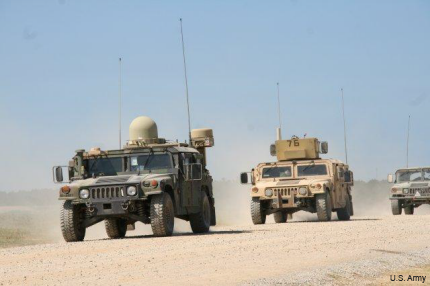Army awards contract for WIN-T Increment 2
The Army has awarded General Dynamics $219 million for full-rate production of systems for its battlefield network.

The Army tests Increment 2 communications nodes.
Having gotten the Pentagon’s OK to move ahead with production of the second increment of its high-speed battlefield communications network, the Army has awarded a $219 million contract to General Dynamics for the work.
The contract calls for full-rate production of Warfighter Information Network –Tactical (WIN-T) Increment 2 systems for more than 300 vehicle-based network communication nodes as well as additional equipment and materials, according to General Dynamics.
The program has seen some back-and-forth in its funding and development strategy. Between December 2013 and December 2014, its funding jumped by 36.2 percent, which was attributed to a reduction nodes from 5,267 to 3,583, along with an eight-year extension of procurement schedule that aligns with the revised Army modernization strategy to transfer WIN-T Increment 2 requirements to WIN-T Increment 3. But a GAO report also noted that “fiscal constraints” had forced the Army to restructure the overall WIN-T effort, eliminating unique hardware requirements for WIN-T Increment 3, but retaining the software development efforts to give Increment 2 better capabilities in fiscal 2016.
Meanwhile, the Senate’s version of the National Defense Authorization Act for 2016 plans to cut $200 million from WIN-T, which it targets for “excessive and unnecessary spending.” After the bill came out of the Senate Armed Services Committee in May, a tweet from committee Chairman John McCain (R-Ariz.) referred to the “over-budget & poorly performing Army WIN-T program.” The legislation passed the full Senate at the beginning of June and is currently in conference with the House version before being sent to the president.
McCain also said via Twitter that his committee’s legislation saves “$200M on Air Force GPS III Satellite which has experienced schedule delays & cost increases.” The GPS III program has faced a series of setbacks, forcing the current GPS II iteration into longer deployment.